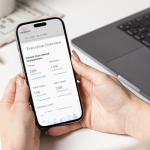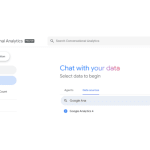
On March 16th, 2022, Google announced it would be shutting down Google Analytics Universal Analytics. GA UA will stop collecting new data on July 1, 2023, and Google has said the historic data will be available until July 1, 2024. With the inevitable shutdown looming, there are several things you need to prioritize to ensure a smooth transition and no loss of historic data.
Before You Begin
Before you can begin archiving your Google Analytics Universal Analytics data, you'll need to be able to answer the following questions:
- Data storage: Where will the data be transferred to?
- Defining schemas: Which dimensions and metrics are going to be included in the transfer?
- Data transfer tool: How will the data be extracted and transferred?
- Data size: How many years of data do I need to transfer?
Data Storage
There are a variety of data storage options available designed to fit large, medium, and small organizations. Small companies may decide to export their Google Analytics Universal Analytics data directly from the user interface and save it locally on a hard drive or in the cloud using a storage service like Dropbox or Google Drive. Larger organizations will likely need a more robust approach that allows multiple teams access to the data and the ability to quickly visualize historic reports. The most practical solution for accessing your historic Google Analytics data is a cloud-based data warehouse such as Google BigQuery or Amazon RedShift. Larger organizations will likely have an existing data lake (where they can store unformatted data) and defined governance.
Defining Schemas
It would be great if we could just download all of the dimensions and metrics from Google Analytics in one go, but Google limits us to a maximum of 7 dimensions and 10 metrics in a single request. You will likely need to define 5—10 data transfer schemas that will capture the information you will want to have a record of and revisit in the future. We've published a list of the top schemas being used in Launchpad — take a look at the list here.
Data Transfer Tool
If downloading hundreds (or thousands) of files, transforming them, and uploading them to your data warehouse sounds unappealing, then you're not alone. Luckily, there are a host of data transfer tools available today that can connect directly to the Google Analytics API and transfer your data to the destination of your choice. Launchpad by Calibrate Analytics offers users the ability to connect to all of the dimensions and metrics in the Google Analytics API and transfer them without writing a single line of code.
Data Size
Understanding the number of years of data you need to archive will help you estimate the size of your tables and the relative cost for the transfer and hosting. Estimating the number of records you'll need to store is easy — you'll want to export the reports from the Google Analytics user interface with your desired schemas, and then you'll use the following formula to estimate the total number of records you need to transfer:
(Number of rows in export / number of days in date range) * number of days needed for archive

Need Help?
If you're having any trouble automating your reports, then the experts at Calibrate would be happy to help. From walk-throughs and interactive demos to custom solutions, we'll help you set up a healthy analytics stack that fuels smart business decisions.






